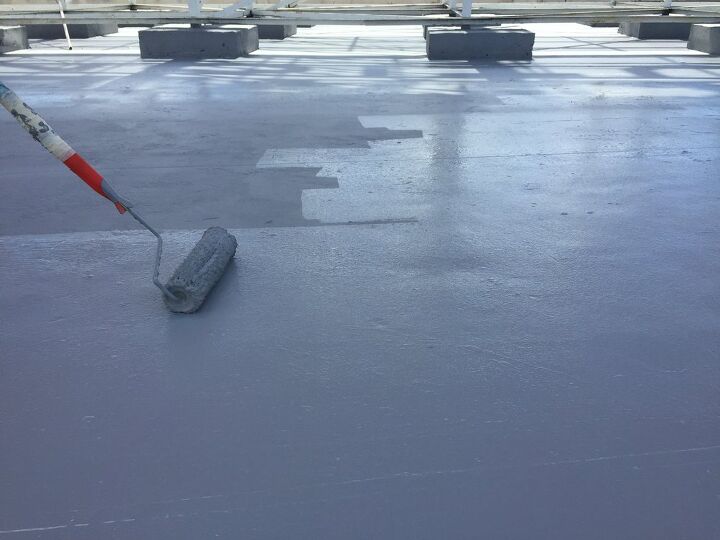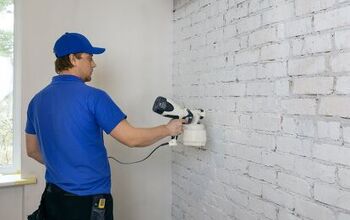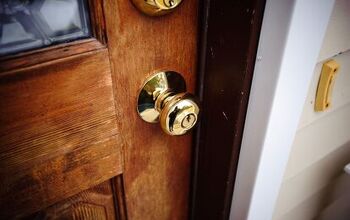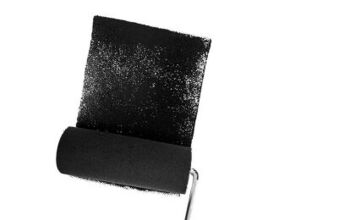What Kind Of Paint To Use On Rubber? (Find Out Now!)

When you own a home and want to make some changes, there aren’t many cheaper ways to do so than by applying a fresh coat of paint. It’s quick, cost-effective, and can give any room (or the entirety of the home) a fresh look.
When you have surfaces made of rubber, however, it can make painting more challenging. When painting rubber surfaces, make sure that you go with a durable, adhesive paint. There are three kinds that should work better than others: commercial-grade marine paint, acrylic, and exterior paint.
Do You Need Painting or Staining Services?
Get free, zero-commitment quotes from pro contractors near you.

Paint For Rubber Surfaces
Option 1: Commercial-Grade Marine Paint
If you are looking for optimal durability out of the paint that you choose, there is nothing better than commercial-grade marine paint. Not sure what kind of paint that is? It is the kind of paint that is typically used in swimming pools and boats, so it is meant to hold up to not only wear and tear, but it is waterproof as well.
Even better, commercial-grade marine paint has a high resistance against cracking, fading, and chipping since it is naturally built to withstand all of the harsh elements. You would also want to use this on any outdoor rubber surfaces you may have for the reasons outlined above.
Option 2: Acrylic Paint
For any indoor items made of rubber that need painting, acrylic craft paint is the best route to go. Keep in mind that this is the best option for those items that won’t get a whole lot of wear and tear as the acrylic won’t hold up against repeated abuse.
You may also need to use at least two coats, just make sure that you allow each coat the proper amount of time to dry in between. When the paint has dried completely, seal it. You can use a paint sealer located in the paint department of your local home improvement or craft store, so it’s easy to find.
Option 3: Exterior Paint
Should you be trying to paint an item that will remain outside permanently, you need to go with an outdoor paint that is durable and non-toxic. Constant exposure to the sun and the elements can wear down a paint that is not equipped to handle it.
Before you start with any painting on this project, make sure that you coat the rubber using an exterior primer. This will help the paint adhere and is a vital step in the process. Let it dry completely before beginning the painting as the paint won’t take hold properly.
When you begin painting, you can either use a brush to directly apply the paint or even spray paint. The primer will be what holds the paint in place, so the application process won’t particularly matter.
Removable Rubber Coating
There might be a time where you want to remove the paint from your rubber surface. When this is the case, the best option is to paint the rubber surface using what is known as a removable coating. You can generally find this at a local hardware or paint store.
This is a great option if you want to paint over something short-term. Even though it is completely and easily removable, it is still highly durable and shouldn’t peel or chip without some serious effort on your part.
Is Acrylic Paint Waterproof?
Acrylics are a tougher type of paint. In most cases, when you have applied the acrylic paint and it has ample time to dry, water won’t really be able to permeate the surface. That is why acrylic is such a viable and common choice.
Still, it’s a good idea to waterproof the surface that you are painting. An added level of protection never hurts and will keep you safe in the long run. You can waterproof using a varnish. This is generally an acrylic gloss of a special variety.
What Types of Paint are Waterproof?
There are two traits that you would look for out of a paint used on the surfaces on your home: durability and waterproofing. The aforementioned paints are both waterproof and highly durable, making them excellent options when painting indoors or outdoors.
But there are plenty of other paints out there that are waterproof, which could work well in areas that don’t get heavy rain or perhaps have a more consistent climate.
Masonry Paint
Made from latex and ceramic, masonry paint tends to be used more for cement, stones, bricks, cinder blocks, and concrete blocks. This type of paint absorbs water as well as other liquids and can easily clean using a soap and water mixture.
Masonry paint is highly durable since it is primarily used for outdoor purposes. If you plan to use it inside, it should only be used on concrete flooring. It can make for a highly effective choice for painting a wide variety of surfaces.
Masonry paint is waterproof, resistant to dirt, available in a wide array of colors, and is even environmentally friendly.
Epoxy Paint
Though masonry paint may not be the best option for painting rubber in particular, epoxy may be another choice in addition to the others mentioned previously. Epoxy is created using an epoxy-based resin that is known as polyepoxide.
Epoxy paint is substantially thicker than other types of paint and has a ton of benefits. In addition to having a more permanent adhesion, it is also waterproof, durable, durable, long-lasting, easy to clean up, and is resistant to a number of things (heat, chemicals, rust, acid, and more).
The great thing about epoxy paint is that it can be used for just about any purpose, exterior or interior. You can use it to provide a beautiful finish to any surface, you just need to give it ample time to dry. It can take up to 3 days for it to be able to withstand heavy foot traffic, so keep that in mind before applying.
What are the Benefits of Using a Waterproof Paint?
Besides the obvious point of not allowing water to permeate that surface, there are a ton of other benefits that make waterproof paints such a great idea. It is very easy to clean up; all you need is soap and water to clean it effectively without damaging it.
Waterproof paint also protects from a number of things, primarily algae, mildew, mold, moss, and it can actually stop fungal growth completely. Mold in particular can be dangerous for the respiratory system, so preventing its growth is essential.
Waterproof paint also tends to be UV-resistant. For outdoor use, this is of the utmost importance. The constant UV exposure can leave other types of paints cracked, peeled, or flaked. Waterproof paint will prevent all of that from happening. Simply put it is highly durable, very design-friendly, and very easy to keep clean.
Do You Need to Seal Acrylic Paint?
While acrylic paint is highly durable on its own, it is imperative that you varnish your acrylic surfaces. That varnish is meant to provide additional protection against UV rays, dust, any potential wearing or yellowing, and more.
Varnish will generally come in a number of forms. It could come in a satin, gloss, or matte finish, though the gloss tends to be the most popular due to its naturally glossy finish. It can add just another layer of aesthetic pleasantness to an already attractive paint.
Do You Need Painting or Staining Services?
Get free, zero-commitment quotes from pro contractors near you.

Why are Some Acrylic Paints More Expensive Than Others?
If you’ve ever painted with acrylic before, you know that there can be a drastic difference in the cost between some types. Generally speaking, most acrylic paints will be within the same price range and offer the same protective qualities.
One reason that you may find an acrylic paint that is substantially more expensive than the others is because there are certain pigments that are much more difficult to obtain. Those tougher pigments can create unique, one-of-a-kind colors that can help the surface you intend to paint stand out substantially.
Check out your potential options before you begin the process of painting. The last thing that you want to do is begin setting things up and find out that the paint that you want to use is much more expensive than you ever anticipated it being.

Ryan Womeldorf has more than a decade of experience writing. He loves to blog about construction, plumbing, and other home topics. Ryan also loves hockey and a lifelong Buffalo sports fan.
More by Ryan Womeldorf




















![How To Reset A Whirlpool Cabrio Washer [In 5 Easy Steps!]](https://cdn-fastly.upgradedhome.com/media/2023/07/31/9076531/how-to-reset-a-whirlpool-cabrio-washer-in-5-easy-steps.jpg?size=350x220)






